Similar to most living things, your lawn also has some important needs to remain healthy and strong.
It needs sun, air, and great soil, but it also needs water. While we regularly talk about watering being an important part of your Northern Virginia lawn, it’s essential to remember that the correct amount is necessary to avoid any issues.
This means that not enough water, of course, can be a problem, but also you can deliver too much of a good thing. The fact that you can overwater a lawn tends to surprise people, but it’s true. In fact, you might not even know you’re doing it.
Let’s talk about how to tell if you are overwatering your lawn and how to fix an overwatered lawn so you can perfect your lawn watering strategies and obtain that lush, thick, green grass you long for.
Lawn Overwatering 101
Many lawn problems can be caused by underwatering or overwatering a lawn. Everything from color to growth to disease can all be impacted.

Here we’ll review multiple signs of overwatering grass to help you identify the right amount of water necessary to keep your grass in good health.
Can You Overwater Your Lawn?
Since drought seems to always be a bigger issue, it can seem like you might never be able to overwater your lawn.
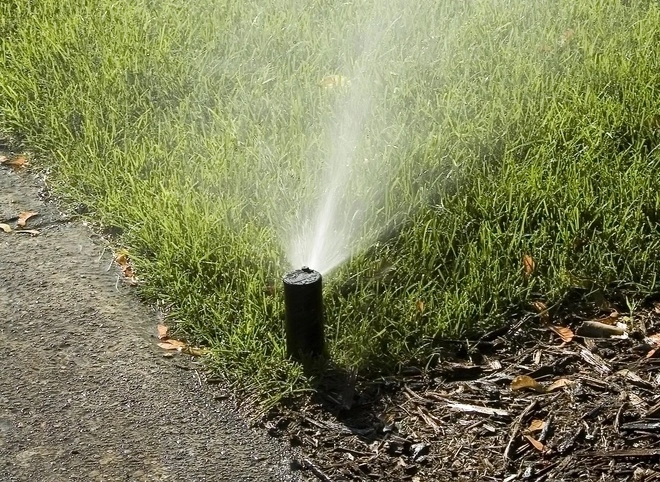
But overwatering is possible and can cause your lawn harm, stunting root growth and suffocating your grass.
What happens when you overwater your lawn is you can damage the root system by depriving it of oxygen and nutrients.
Can You Overwater a Newly Seeded Lawn?
Yes, you can even overwater a newly seeded lawn, even though it needs more frequent watering than an established lawn.
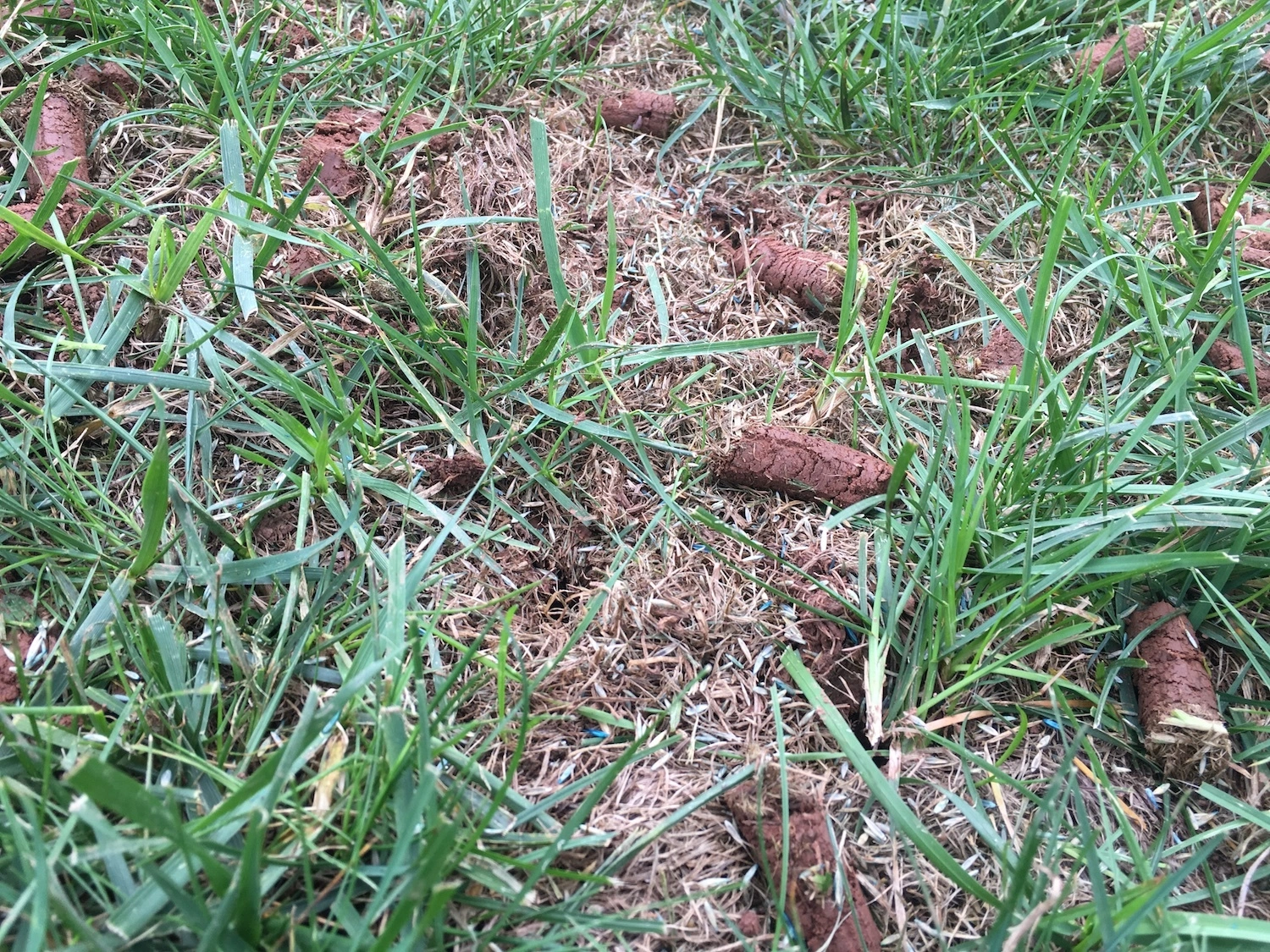
What happens when you overwater your lawn after it’s just been seeded is that as you’re trying to grow lawn roots, you can end up creating situations for root rot to develop.
Top 9 Signs of Overwatering Grass
Now that you know overwatering can be an issue, you might be asking yourself, “What Are Signs of Overwatering Grass?”
There are some distinct signs you can look for that may indicate you’re overwatering your lawn.
1. Off-color or Discolored Grass
A big sign of overwatering grass is color – or rather lack of color.
Your lawn should be a deep green color. But if it looks yellow, brown, or even pale in nature, it could be getting too much water.
2. Soil That Feels Mushy
How to tell if you are overwatering your lawn can also be felt when you walk on it.
It might feel soggy. You might even see water come up around your shoe. This is a sign the ground is holding too much water.
3. Excessive Fungi
Lawn diseases love wet soil.
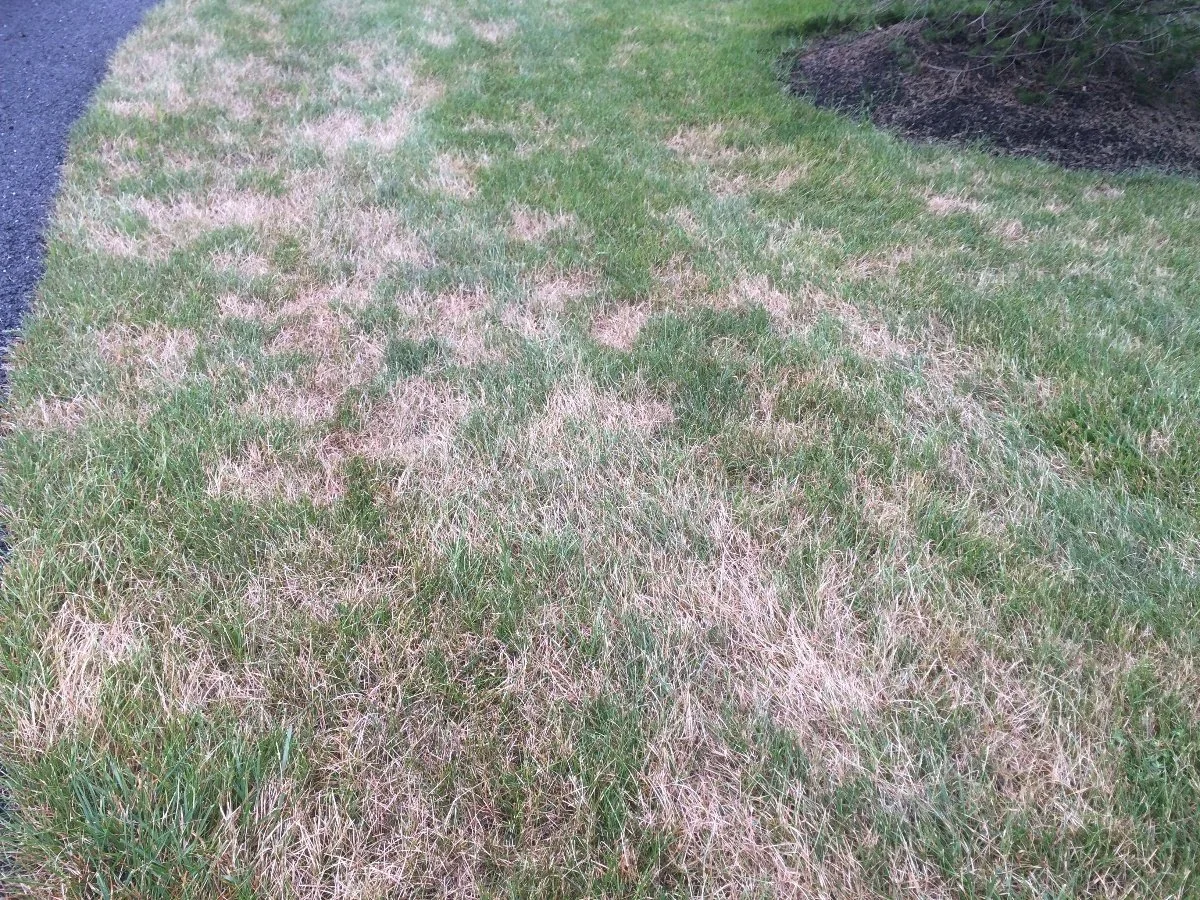
If you notice signs of brown patch or dollar spot or powdery mildew, it may be a sign of overwatering grass. You might even see mushrooms popping up in your lawn.
4. More Weeds Than Usual
Weeds love a weak lawn, and what happens when you overwater your lawn is weeds can find more ways to sneak in and take over.
Cutting back on how often or how much you water can help bring your lawn back into balance and give you a chance to fight and prevent weeds.
5. Water Running Off Of Your Lawn
If your lawn can’t absorb the water you’re giving it, it may run off of the edges into other areas like patios or walkways or your driveway.
Managing how much and how often you water can reduce this runoff and help your lawn better absorb water.
6. Grass That Becomes Thin
Signs of overwatering grass include grass that thins out instead of thickens up.
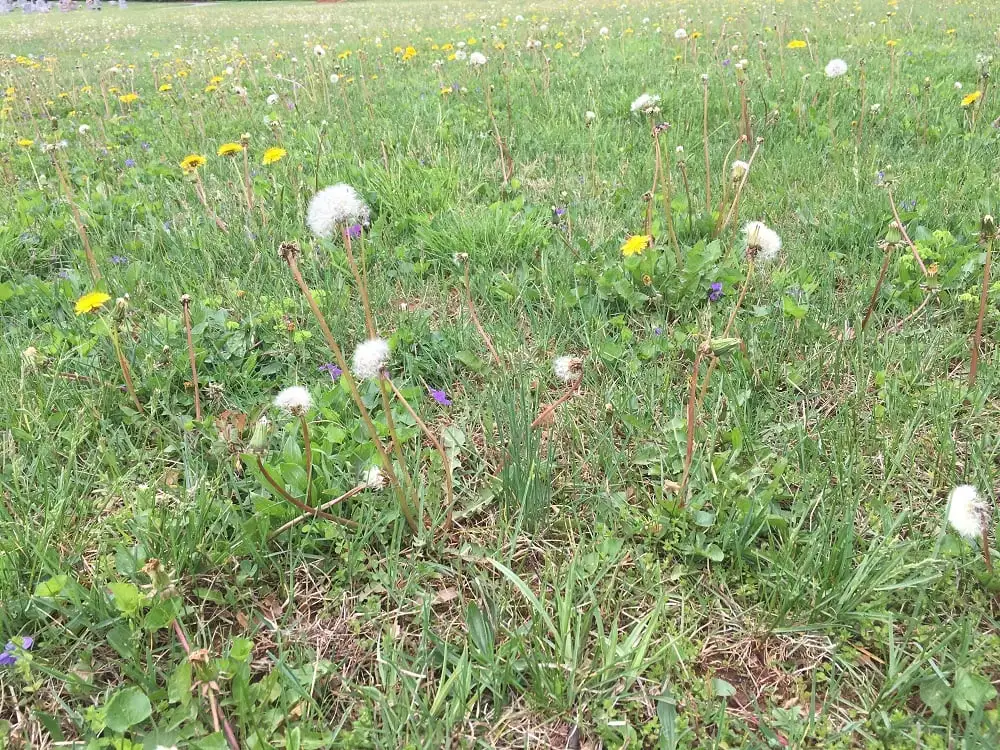
This means the roots can’t absorb nutrients, and this creates a lawn that becomes thin and even sparse.
7. Spots and Bare Patches
Do you notice a bunch of bare spots and open patches in your lawn?
This may be a sign of overwatering grass over time. This is because your lawn will be drawing without air or nutrients and begin to thin, creating open areas and even spots for weeds to infiltrate.
8. Too Much Thatch
Clay soils in Northern Virginia have a tendency to become compacted. This creates thatch building at the base of grass plants.
A sign of overwatering grass is also excessive thatch buildup, and this can also lead to greater compaction problems.
9. Pest Infestations
Insect infestations can also be a sign of overwatering grass.
Overwatering your lawn can lead to weakened grass, and that can invite pests to come in and feed on your grass blades and/or roots.
How to Fix an Overwatered Lawn
OK, so maybe you’ve overwatered your lawn. Don’t panic.
There are some things you can do in terms of how to fix an overwatered lawn so you can get your lawn back to good health.
The first step: stop watering. Reduce the amount of water you're applying to your lawn to give it a chance to dry out a bit and recover.
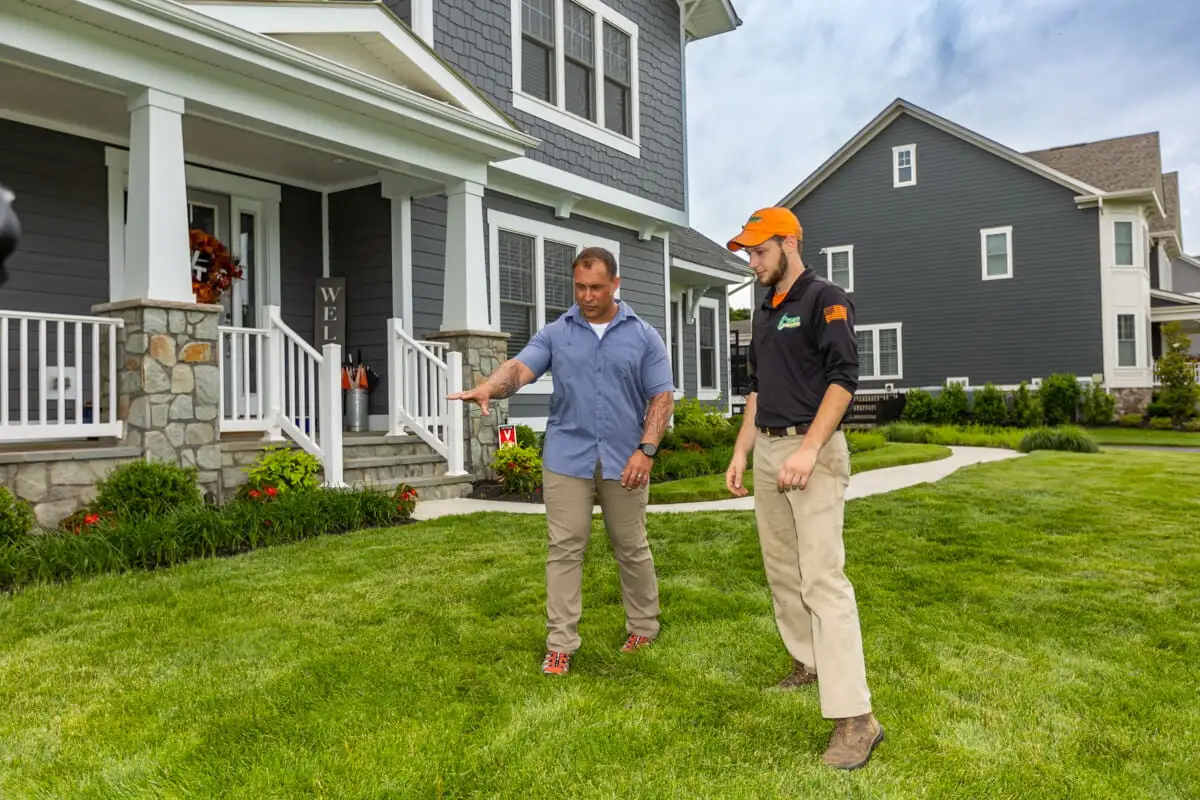
Next, you want to talk to a professional about dealing with any issues that may have resulted from overwatering, such as lawn disease, pests, or even thatch overgrowth and compaction.
Finally, you want to learn about proper watering strategies. Let’s review those to give you a refresher.
Proper Lawn Watering in Northern Virginia
Let’s talk about proper watering strategies so you can learn how to fix an overwatered lawn.
Typically, your Northern Virginia lawn needs about 1 to 2 inches of water each week – that’s it.
Sometimes, this can be met with rainfall, but during summer’s drier months, you may need to supplement rain by running an irrigation system or sprinklers.
How do you know if your lawn needs water? Check out its color. Your lawn should be a nice, even, deep green. If it begins to fade to a dull or dry shade, like a brown, it could be underwatered. The confusion comes in since this is also an overwatering sign. If you also see sponginess in your soil, then the discoloration is from overwatering, not underwatering. But if you walk through your lawn and see impressions left by your shoe that don’t bounce back, then your lawn is underwatered.
What type of schedule equals 1 to 2 inches of water? This will be different based on rainfall, but your goal is to water one to two times each week for 45 to 60 minutes per area or zone.
In terms of timing, watering in the early morning hours before the midday sun is hot and bright is best to avoid evaporation before that water reaches lawn roots and to ensure it dries out enough before nightfall to discourage lawn disease that can result from humidity buildup.
Let Turf’s Up Help You Get a Great Lawn in Northern Virginia
We hope these tips on how to fix an overwatered lawn help you recognize and identify signs of overwatered grass, as well as learn how to fix problems and get your lawn back to good health.
But water is only a single part of what makes a great lawn. Proper mowing, adequate fertilization, and insect and disease prevention and care, as well as aeration and overseeding, are other essential parts of lawn maintenance.
Confused or concerned that your lawn might be overwatered or that you don’t know where to start? We get it. Lawn care can sometimes seem overwhelming, especially when you’re busy with your work, family, and other responsibilities.
But don’t stress out. The right lawn care service partner can educate you on all of these key basics and give you the knowledge to feel confident in knowing how your lawn grows and what type of watering schedule it needs. Give Turf’s Up a call. We can help you get your lawn to great health.
Then you can sit back and enjoy your lawn instead of worrying about these issues.
Ready to learn why Turf’s Up could be your totally awesome choice for lawn care services in Northern Virginia? We’re stoked to learn more about you and help you have the best lawn on the block. Get started today with a free quote. Together, we can prepare a customized plan that is perfect for you and your lawn. 

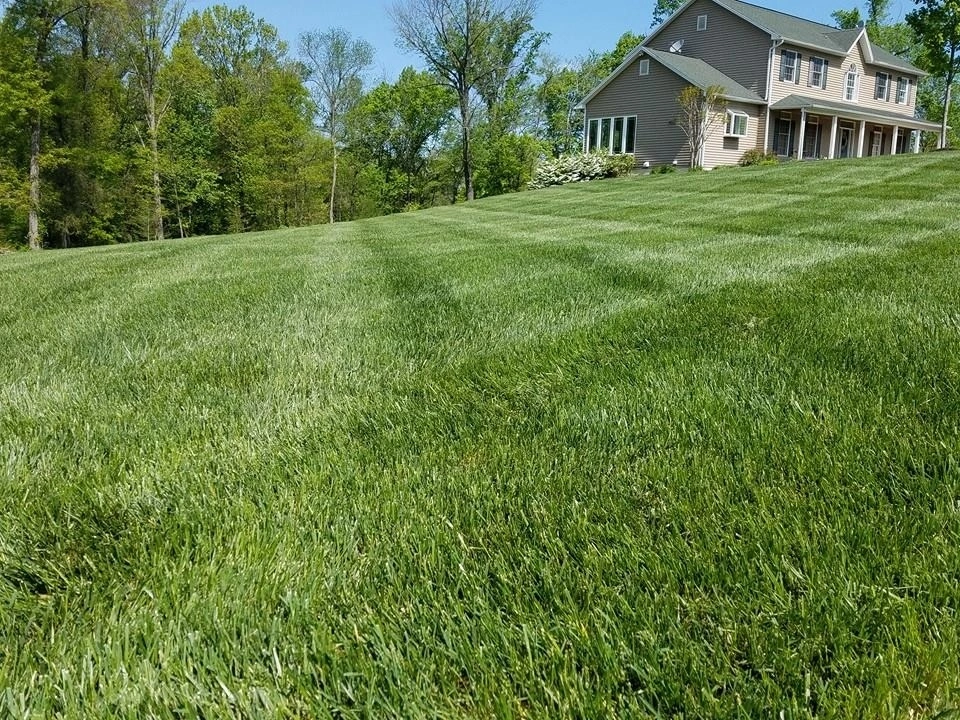



Comments (0)
Thanks for your comment!
Thanks for your feedback! Your comments have been successfully submitted! Please note, all comments require admin approval prior to display.
Error submitting comment!
There is a problem with your comment, please see below and try again.